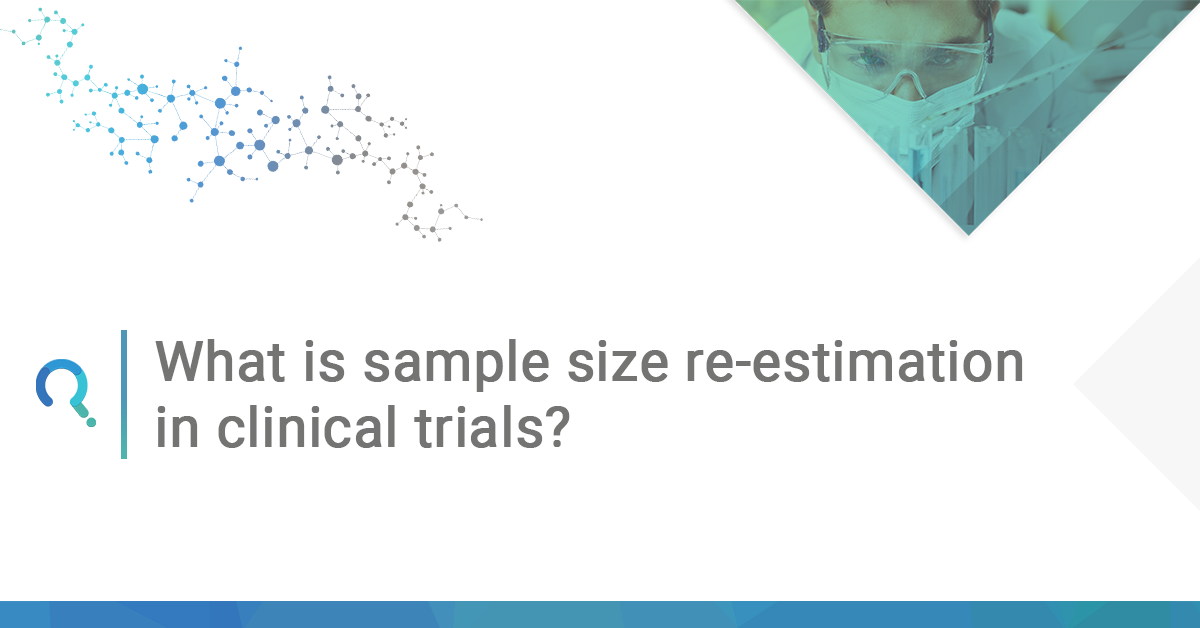What is Sample Size Re-Estimation in Clinical Trials? How to conduct a sample size calculation for SSR? Let us quickly examine this topic and what it means for you.

Sample size re-estimation is a type of adaptive trial where we can increase the sample size if required to ensure adequate power is maintained. In a sample size determination or initial sample size calculation, researchers are estimating what the initial sample size is. There's obviously a lot of uncertainty about the assumptions made to do that sample size calculation.
This video is an excerpt from our webinar The Advantages & Disadvantages of Adaptive Sample Size Re-Estimation.
There are two primary types of sample size re-estimation (SSR). These are:
The difference between each type is in whether the data is blinded or not. They both really target different aspects of sample size determination and the uncertainty that occurs at that stage. To establish what sample size re-estimation is, first we need to briefly look at two related concepts: Conditional power and Group sequential trials.
Conditional power is the probability of rejecting the null hypothesis, (finding significant p-value effectively), given your current interim estimate for the effect size. This calculation requires you to still make an inference about what's the true effect size, in the population, and obviously that's quite a strong assumption.
Conditional power isn't just used in unblinded sample size re-estimation. It's also used for futility testing, in a more flexible way than the group sequential method but also in a more ad hoc way, meaning it has less guaranteed error control. In regards to sample size re-estimation, conditional power is used to define what a promising result is.
"Promising" is a conditional power which is less than but sufficiently close to your target conditional power and the target conditional power is usually just the original power you had for your studies, so 80% or 90%. If you have a conditional power of 60% based on interim estimates of an effect size, that's a sufficiently high conditional power that's promising relative to our initial target power of 80%.
In the case of doing unblinded sample size re-estimation such as our example above, we'll be doing it in the context of attaching it as an addition to a group sequential design. However, this is not necessarily the only way of doing unblinded sample size re-estimation.
Group-Sequential Design is where clinical trialists have the opportunity to stop a trial early for either of futility or efficacy, where efficacy is related to the alpha error and futility is related to the beta error. This is when you can stop the trial early based on the interim evidence e.g. After half the people have their results come to fruition in your study. It's important to note that such analysis can only take place at pre-specified times.
Error spending is done via the Lan-DeMets error spending function approach, where basically a certain proportion of the Type I and/or II error is spent at each look. There are multiple different types of spending function with the O'Brien-Fleming function being a very common conservative (i.e. less error spent at interim looks) approach and the Pocock spending function a common liberal one. Alpha (efficacy testing) and beta (futility testing) error spending work very similarly in terms of the actual underlying math and spending function calculations; and can be done together or separately for any given design.
To read more about sample size re-estimation, we recommend checking out What is Unblinded Sample Size Re-Estimation in Clinical Trials?
We recently hosted a webinar examining Advantages & Disadvantages of Adaptive Sample Size Re-Estimation. You can watch this webinar on demand by clicking the image below.
In this webinar you’ll learn about:
If you are exploring adaptive designs, one important factor is to select validated and trusted software that is designed for your task. nQuery has dedicated adaptive trial design functionality that contains a selection of sample size tables designed specifically for areas of adaptive design.
These Stories on Adaptive Clinical Trials
Copyright © Statsols. All Rights Reserved. Do Not Sell or Share My Personal Information | Privacy Policy | License Agreement | Legal Disclaimers